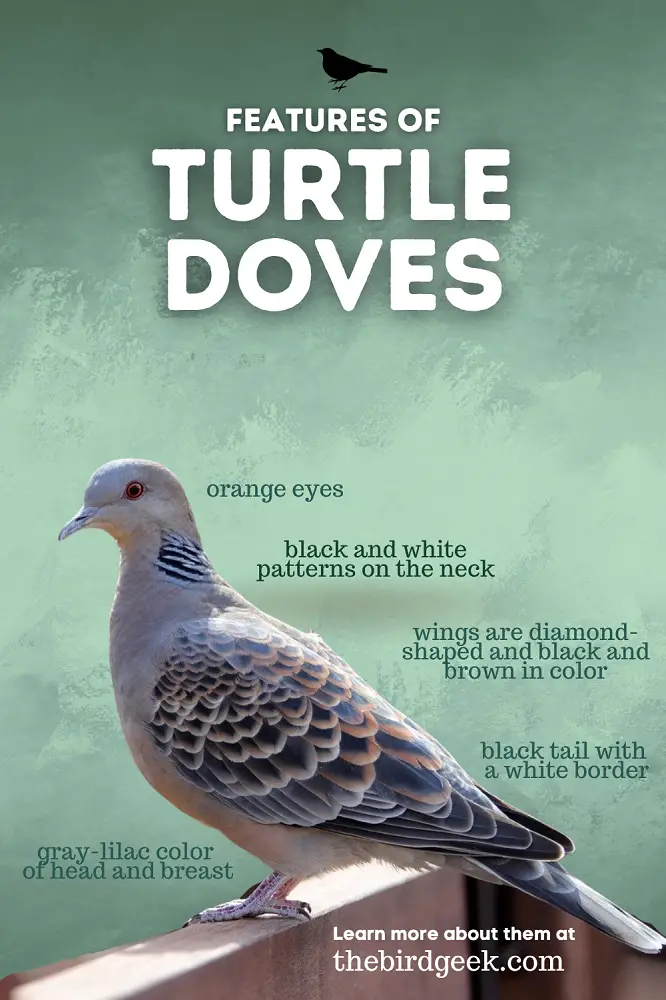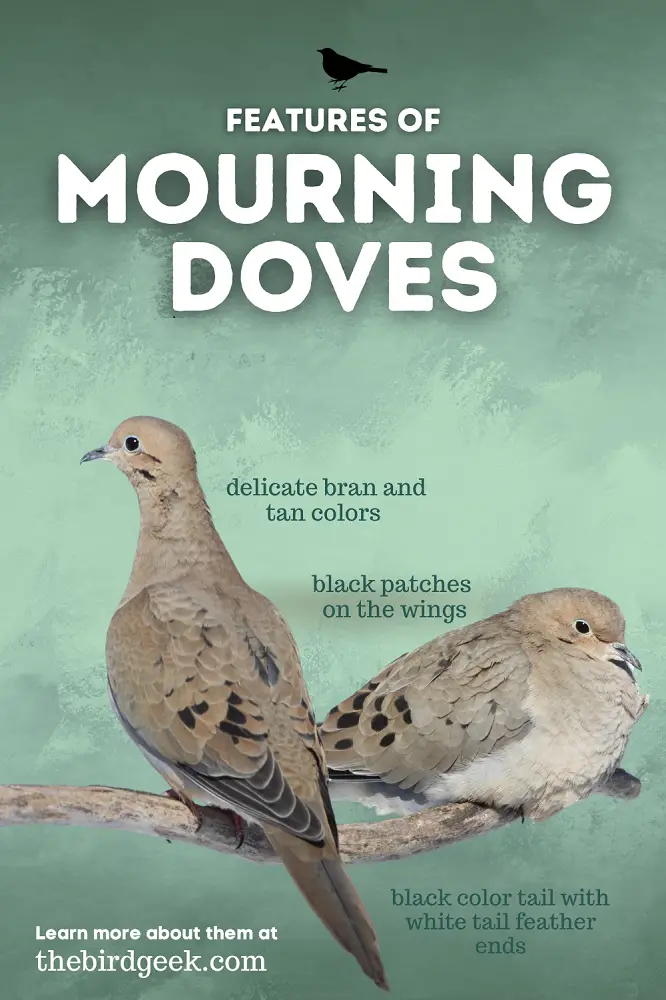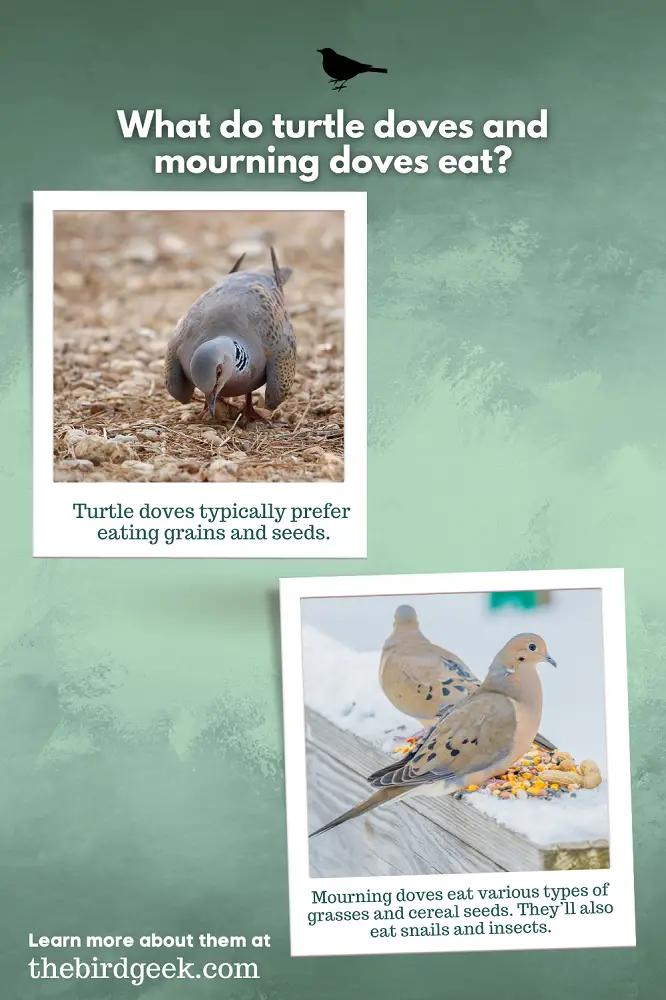Turtle Dove vs Mourning Dove
Doves are some of nature’s most beautiful creatures, and the many different species in this group might seem interchangeable at first. However, there are many stark differences between birds like turtle doves and mourning doves, variations that must be understood if you’re interested in spotting these wonderful creatures on your adventures. If you’re interested in identifying these great birds, please read through the list below to understand how they differ.
What’s the Difference Between a Turtle Dove and a Mourning Dove?

When you’re out in the wild looking for turtle or mourning doves, you need to fully understand how they differ from each other to avoid identification errors. Thankfully, we’re here to help! Here are a few ways that they differ that you can watch for while you’re out in the woods listening for your favorite bird species or trying to find new ones:
- Turtle doves make cooing sounds, while mourning doves make a “perch-woo” sound
- Mourning doves have a tapered tail, while mourning doves have a wedge-shaped tail
- Turtle doves are between 10-11 inches long, while mourning doves are 9-13 inches
- Mourning doves have a 15-18-inch wingspan, while turtles doves have 19-21 inches
- Turtle doves rarely ground forage for food, while mourning doves do primarily
- Mourning doves are found in the “New World,” while turtle doves are in the “Old World”
- Turtle doves have flocks of up to 300 birds, while mourning doves hit up to 400 birds
- Mourning doves have black patches on the wings, while turtle doves have brown and black
- Turtle doves eat maize, canola, and mustard seeds, while mourning doves eat plants
- Mourning doves migrate medium distances, while turtle doves migrate long distances
- Turtle doves have 1-6 broods of two eggs, while mourning doves have 5-6 broods
These are just some of the differences between these birds. Below, we’ll highlight even more to help you better understand these beautiful species. Make sure you read through this guide carefully to earn a deep and complex understanding of these wonderful birds.
Related post: All About Baby Pigeons
How Do They Differ In Appearance

As you might imagine, turtle and mourning doves look quite different from each other. The turtle dove has orange eyes with black-and-white patterns on their necks. The tail is primarily black with a white border, while its wings are diamond-shaped and black and brown. Expect a gray-lilac color on their heads and breasts that makes them hard to miss.

The mourning dove differs by having delicate bran and tan colorations throughout its body. They also have black patches on the wings, and white tail feather ends with black color throughout the tail. As mentioned above, these birds are also slightly different in size, with the mourning dove topping off at about 13 inches and the turtle dove just about 11 inches.
Where Do These Birds Live?
If you live in North America, you’re not likely to see turtle doves: they live primarily in Asia, Africa, and the Middle East or the “Old World.” That’s why the old Christmas carol “The 12 Days of Christmas” includes a turtle dove rather than a mourning dove. They also typically don’t live in urban areas and usually stick close to grasslands, woodlands, and semi-arid areas.
The mourning dove does live in North America and is found throughout southern Canada all the way to Mexico and even in Bermuda and Panama. They like open and semi-open environments, living throughout grasslands, meadows, fields, and woodlands. That said, they’re not quite as shy as their cousin turtle dove and can be seen sitting on telephone poles and large buildings.
Related post: What You Need To Know About Baby Crows
What Do These Birds Eat?

Turtle doves typically prefer eating grains and seeds, including maize, canola, and even rapeseed, throughout Europe, Africa, and the Middle East. They’ll occasionally eat other types of plants and may be seen eating sand or grit. Like other birds, turtle doves eat this grittier material to help with digestion, as it sits in their stomachs and breaks down food more effectively.
Mourning doves also eat various types of grasses and cereal seeds, though they’re also quite happy eating other types of plants. Unlike turtle doves, they’re ground foragers. As a result, they usually prefer to eat what’s easily visible and aren’t anywhere near as picky as their cousin bird. In fact, they’ll also eat snails and insects if they can’t find their preferred seeds!
Related post: The Best Birdseeds To Attract Colorful Birds
Are They Prey to Any Predator?
Neither the turtle dove nor the mourning dove are apex predators and may be prey to many types of predators. While this is definitely sad for people who love these birds, you can use this information when spotting these birds. For example, the turtle dove is typically hunted by large mammals like bobcats and birds of prey, so pay attention to these creatures’ habitats and movements to identify potential turtle dove areas.
By contrast, the mourning dove is fed upon by raccoons, owls, snakes, cats, and even squirrels that get desperately hungry in the winter. Like with the turtle dove, you can track these predators as they move throughout the forest and pay close attention to the sounds of the forest to get an idea of whether or not the turtle or mourning dove is near you. Speaking of sounds…
What Do These Birds Sound Like?

When you’re out in the wild, the easiest way to track birds is to listen to their calls. As mentioned in the first section of this article, turtle doves make a unique cooing sound that is very easy to detect once you’ve heard it once. Check out this wonderful recording at British Birdsongs to hear the turtle dove cry: it’s a sound so beautiful that composers have tried to mimic it for centuries.
The mourning dove has a much different sound, one that is often mistaken for an owl when in the wild. Check out Free Sounds Library to hear how this bird’s soulful call. Now you can understand why they’re called the mourning dove! Furthermore, chances are that you’ve heard this call in the woods at least a few times when you’ve been out birding.
What Kind of Migration Patterns Do They Prefer?
Both the turtle and mourning dove migrate during cold seasons, though their patterns can vary quite heavily. For example, a research project done by Operation Turtle Dove tracked a single turtle dove from Suffox, England, during its migration path. It flew from England all the way to Mali in Africa and back, a trip of 11,200 kilometers or 6,959 miles. Other research projects have shown similar patterns for this bird, though African turtle doves may not migrate at all.
By contrast, the mourning dove doesn’t migrate nearly as far, though this may vary depending on where they live. For example, birds that live throughout the southern parts of the United States may not migrate at all or only a few hundred miles to Mexico when the temperature gets cold. That said, mourning doves in Canada may migrate a few thousand miles to Mexico and back. So, while they’re not afraid to fly, they typically don’t go as far as their turtle-dove compatriots.
Related post: Hawk Migration in North America
Are They Similar In Any Way?
As you might imagine, there are similarities between these two bird species. After all, they’re in the same family and typically have some similar evolutionary actions. Let’s take a look at a few similarities to contrast with their differences to highlight these birds in even more depth, including how both species have:
- Similar social behaviors, such as living in large groups, though they can live separately from flocks with a mate during the mating season if they want
- A tendency to show very high territorial behaviors between other birds in their species during the mating season
- The same type of nesting preferences, with the male bringing twigs, pine needles, and grasses for the females to build the nests
- More or less low-key personalities and are typically not aggressive towards each other or other birds unless it is the mating season
Related post: How to tell Wood Ducks from Mandarin Ducks
References:
- https://www.richardalois.com/bird-facts/turtle-dove-vs-mourning-dove
- https://a-z-animals.com/blog/turtle-vs-mourning-dove-what-are-the-differences/
- https://a-z-animals.com/web-stories/turtle-vs-mourning-dove-what-are-the-differences/
- https://www.dictionary.com/compare-words/turtledove-vs-mourning%20dove
- https://www.allaboutbirds.org/guide/Mourning_Dove/id
- https://www.petsmont.com/blogs/pets/types-of-doves-everything-you-need-to-know